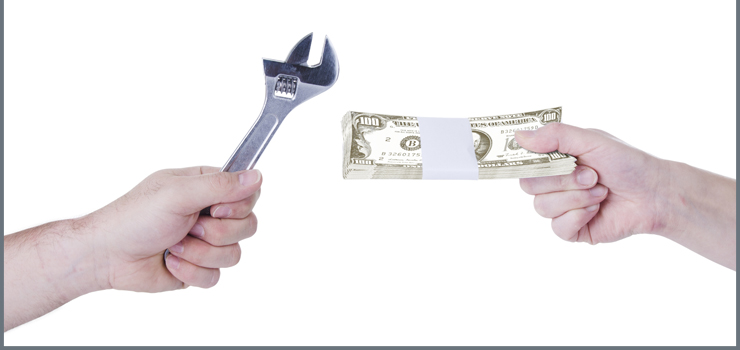 Have you ever done this: Called up one of your competitors, assumed a fake voice and asked, “How much do you charge?” Go ahead. Admit it. We’ve all done it.
Have you ever done this: Called up one of your competitors, assumed a fake voice and asked, “How much do you charge?” Go ahead. Admit it. We’ve all done it.
If you took Economics 101 in high school or college, you learned that selling prices for goods and services are determined by “what the market will bear.” That means that consumers – the market – decide what a product is worth, and will give so much money, but no more, for that product.
After doing a fake-voice phone survey of a few companies, and setting your prices somewhere in their range, you might say you are charging “what the market will bear.” This beats going to the trouble of figuring out what your company’s break-even point is. “We can’t charge more than what the market will bear!” is delivered as a logical reason for maintaining below-cost selling prices.
Here’s the rub. The “what the market will bear” rule applies to commodities. Commodities are products that don’t differ much from vendor to vendor. Gold, for instance, is a commodity. Gold is gold is gold. Gold will follow the economic rule of “what the market will bear” pretty nicely. The law of ‘supply and demand’ will directly affect it. Economics 101 works well when you are talking about commodities.
But it doesn’t count for much as far as your products and services go.
The ‘street’ rule
Here’s the real rule, the ‘street’ rule, the rule they don’t teach you in Economics 101:
The market doesn’t set the selling price. The marketers do.
- Why does Coca Cola sell for three times the price of Best Choice cola?
- How come Rolex sells watches for $50,000 when you can get a very nice quartz watch that keeps time for about $20?
The marketers in this world differentiate their products, and make them something more than a commodity. Marketers create and communicate features that benefit consumers. Benefits add value to the product. Coke is the real thing. A Rolex is a symbol of wealth and power.
If value (V) = price (P), then there is no sale.
V = P = No Sale
Cash in pocket will only be exchanged for something that has a higher perceived value. So, if a product is worth exactly what you are charging for it, no one will buy it. What usually happens is that you will drop your price until the value of your product becomes bigger than the price. However, the marketer increases the value until the price looks insignificant.
V > P = Profitable Sale
Determining a selling price
Lots of folks get confused when they set their selling prices. They look at what everyone else is charging, and then they hope and pray that they can make money at those prices. So, don’t beat yourself up.
Just do it the right way. Decide how much money you want to make. Offer a terrific product. Figure out ALL your costs of doing business. Come up with a selling price that makes your dreams come true. Adopt a marketer’s mindset. Create so much value for your product and service that your customers beg to buy it. Most importantly, forget about the “what the market will bear” rule.

